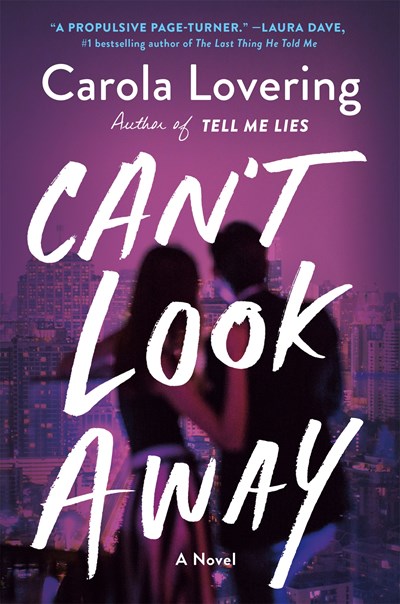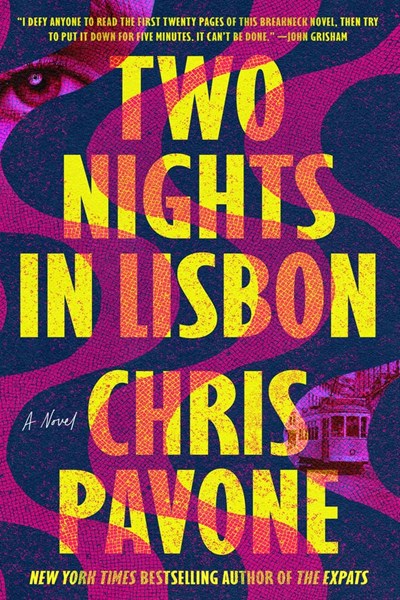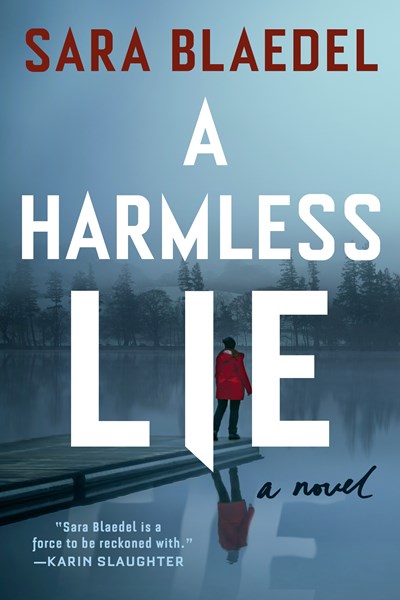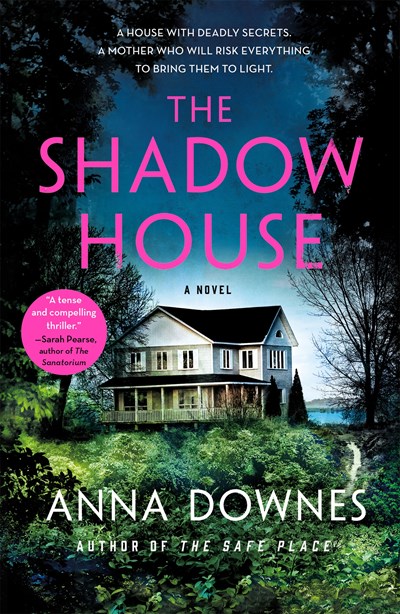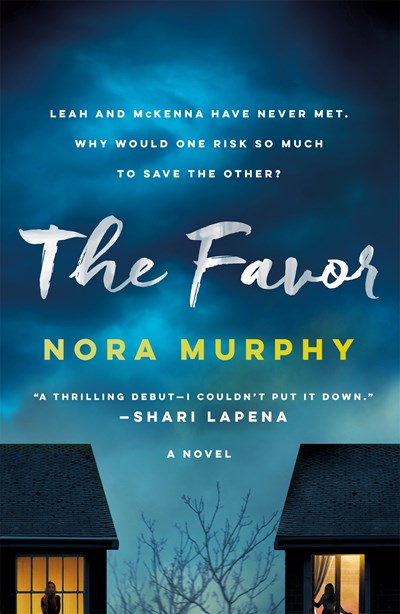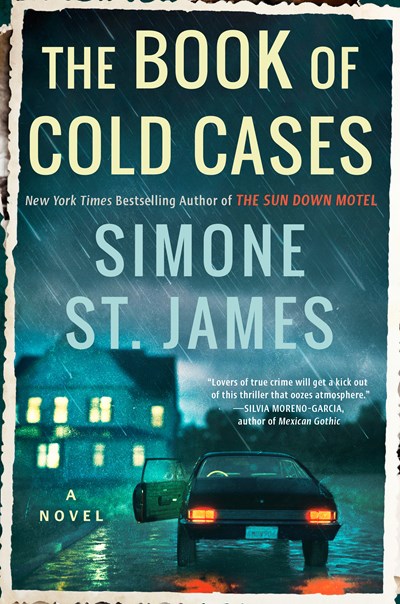Rose (The Perfect Marriage) brings to life the rich, overly botoxed women of Buckhead, GA. Mainly showpieces for their uber-wealthy husbands, they spend their passive-aggressive days at Glow, a membership-only beauty salon where the women commit to several treatments per week. Jenny, Glow’s owner, is stuck being nice to Olivia, the queen bitch of Buckhead, who has mastered the “kinsult,” or kind insult (“your skin is glowing…I can barely notice the lack of elasticity today”). Olivia’s abused minions include Shannon, the saddest woman in the book, whose politician ex-husband, Bryce, left her for a younger woman. The “girls,” and perhaps readers, want to hate Crystal, “Bryce’s midlife crisis,” but Rose doesn’t take the easy way out, creating in Crystal a more layered character than at first expected. Then there’s Karen, a luxury-real-estate lawyer who keeps the book and the “friends” as grounded as they can be. Chapters narrated by each of the women alternate with ones in which Jenny is being questioned by police about what exactly happened at Bryce and Crystal’s housewarming, an opulent event that featured a murder. Rose’s writing is pitch perfect when it comes to both keeping readers gripped and making them want to tear Olivia’s (beautifully done) hair out. If you enjoyed Clueless and other mean girls movies and books, this is for you.
Suspense
Not really crime fiction—unless stealing someone’s boyfriend is now considered a crime?—this book is a brilliant portrayal of obsessive love. We start out deep in hipsterville: Williamsburg, Brooklyn, 2013. Would-be-writer Molly is at a concert where she connects with the lead singer, the super-gorgeous Jake Danner. They fall in love, he writes a song about her that becomes a huge hit, things fall apart, they try to patch things up, he’s off touring, trust is an issue, they break up. Jump ahead 10 years and Molly is living in Flynn Cove, CT, married to the infinitely reliable Hunter, with the two parents to a daughter, Stella. Things are O.K.—Molly’s pretty lonely and is a whole lot more boho than the uptight, preppy women in town—then she meets Sabrina, a new arrival from NYC who shares a lot of her interests, and they quickly become friends. Until it turns out that Sabrina and Molly are sharing more than Molly would ever have imagined, and their many secrets come tumbling out. Lovering does a fantastic job at shifting the point of view from character to character and back and forth in time, managing never to confuse the reader and all the while keeping her foot on the accelerator. A super fun and fast read.
One of the best books I’ve read this year and a brilliant example of how sophisticated and meaningful a thriller can be while still ratcheting up the suspense and anxiety. Imagine you are accompanying your partner on a business trip to Lisbon. After a night of great food and even better sex, you wake up to find that they are gone—no note, laptop and belongings left behind, phone calls going straight to voicemail. What would you do? For Ariel Price, it’s time to mobilize. She starts by quizzing the hotel employees, eventually goading the staff in the American Embassy to help her search for John, her newish husband. But it turns out that to save John, Ariel needs to go far into her past. This novel delves deeply into sexual violence and its life-long ramifications—a rape is graphically described—while continuously upending what the reader believes to be the truth. Hold on to your hat, your head will be spinning. Librarians: purchase multiple copies.
Four strangers—two men, two women, all twenty-somethings—are sharing a table in the grand reading room of the Boston Public Library when a woman screams. They have no idea who she is, where she is, or why she screamed, but it does break down the barriers among the four, and by the time they leave the library, they are fast becoming friends. The crew includes a novelist; a law student; a psychology grad student; and our protagonist, Winifred, known as Freddie, a novelist who hails from Australia. It turns out a woman was murdered in the library, and the fab four take it upon themselves to investigate. But when one of the four is attacked, they begin to realize that there may be a connection between them and the murdered woman. And that one of them may be the murderer. Meanwhile, each chapter ends with correspondence to the author of The Woman in the Library, who lives in Australia, from a Boston-based friend who’s helping her with language and locale—until his communiques take a sinister turn. Readers who enjoy a playfulness in their fiction will be delighted by this book-within-a-book. For fans of Anthony Horowitz.
With its nine volumes, the acclaimed Detective Louise Rick series can be off-putting. But the newest title, A Harmless Lie, is actually a good entrance point. Sure, you’re missing plenty of backstory, but Blaedel is careful in not assuming too much knowledge on the reader’s part. Here, Louise is in Thailand, on sabbatical before returning home and taking the position of Copenhagen’s Head of Homicide, when she gets a call informing her that her brother Mikkel has been hospitalized after attempting suicide and that his wife, Trine, abandoned him and their children just days before. Louise heads off to her claustrophobic home town of Osted, only to confront a withdrawn Mikkel, her anxious parents, and the gradual realization that her brother is being investigated for Trine’s murder. Concurrently, her good friend Camilla, a journalist, is looking into the decades-old disappearance of a teen girl whose body has just been discovered, a girl who happened to be a classmate of Trine. While crawling with cops, this book is hardly a police procedural. It’s a deeply emotional dive into family, community, and the power of secrets.
If you arrived at your new house and found a package at the entrance, containing not some welcome brownies from a neighbor but a grotesquely mutilated bird, what would you do? If you’re anything like me, you’d head for the hills. But Alex, a single mother-of-two, is made from tougher stuff. Escaping from an abusive partner in Sydney, she’s trying out Pine Ridge, an ecovillage out in the boondocks. She’s committed to making it work, especially for her teenage son, who got up to some nasty behavior online. But the bird is only the beginning, as the creepiness includes more horrifying presents, vandalism, and surveillance. It turns out that Alex’s experiences aren’t all that different from those of another family six years ago, but unlike many a thriller protagonist, she’s no victim, and sets out to confront the evil before it destroys her and her family. This is a wonderfully written work of suspense that succeeds in being both completely terrifying and totally believable—no easy feat. For fans of Lisa Jewell and Ruth Ware.
This is one of the best-plotted thrillers I’ve read in ages; it’s also a great portrayal of why women experiencing domestic violence are stuck. We meet Leah Dawson during her carefully choreographed routine of visiting a different liquor store every day. She hides the booze from her violent husband, Liam, a lawyer who has coercive control down to an artform. Leah’s legal career came to an end recently because her husband didn’t like her reading a work email at dinner, and took action. At the liquor store, something compels Leah to follow a fellow shopper, pediatrician McKenna Hawkins. Soon Leah’s routinely watching the woman, who’s also needlessly unemployed, from the street outside McKenna’s clinically clean home. The reason Leah felt drawn to McKenna is quickly apparent: McKenna is just like Leah, or rather McKenna’s husband, Zach, is just like Leah’s Liam. Both have ego to spare, enjoy speaking slowly to their wives to make them feel stupid, and are financially abusive. These guys have it all, until they don’t. No spoilers here, but get this book for the very original storyline, true-to-life characters, and a searing look at the pain and mind games endured behind too many closed doors. For more on why “she can leave any time” is ridiculous and insulting, read the afterword by Murphy, an attorney who’s represented survivors of intimate partner violence.
A medical receptionist by day, Shea Collins operates a popular true-crime website that specializes in cold cases. Single, a loner, and herself a victim—she was abducted as a child—Shea reserves her passions for her blog. Until the day that Beth Greer comes to Shea’s office. Back in 1977, Greer was tried and acquitted in the Lady Killer Murders, in which two men were killed, seemingly for the fun of it, by a female serial killer. Since then, the beautiful, sophisticated, and super-rich Beth has spoken to nearly no one—making it all the more remarkable that she agrees to be interviewed by Shea. Beth slowly opens up to the interviewer—inviting her into her super creepy mansion and deeply introspective life—as Shea struggles to put together the fragments Beth shares. This novel is beautifully written and perfectly paced. It creates a powerful sense of place in its depiction of an Oregon coastal community, and doesn’t shy away from tackling larger social issues, such as the sexism Beth experienced throughout her trial. Finally, its use of the paranormal—something I typically shy away from—is as terrifying as it is credible
Anyone who’s worked in publishing will recognize the low pay, deadline whirlwind, and scramble for recognition facing Carmen Valdez, a Miami transplant in New York. Worse, she’s a secretary trying to advance in a man’s world within a man’s world—comics publishing in 1975. Male colleagues sometimes show up drunk and their work is barely passable. Still, Carmen’s boss, whose father started the company, reminds her that “in the real world, we grant jobs based on experience and merit” when she gives him her comics scripts. Then her smoking buddy at work, Harvey, proposes to help by submitting a project by the two of them, but mainly by her, as his, and to reveal her authorship once it’s a success. Things don’t go according to plan, with not only Carmen’s professional future but also her safety jeopardized by a killer targeting her circle. Complementing this puzzling whodunit is a major plus for comics and graphic novel readers: Segura’s insider view of the comics industry and its history, as well as his spot-on chronicling of the too-frequent backstabbing among striving artists. For fans of Zakiya Dalila Harris’s The Other Black Girl, another look at a young woman trying to make it in publishing
A bold, ambitious novel with a big, multigenerational story line, a busload of characters, and a smart balance between mystery and suspense. Natalie Cavanaugh and Glenn Abbott are sisters, but not the least alike. Natalie is a tough-as-nails Boston cop, while Glenn is a food blogger and now a book author. What they have in common is what they never talk about: the murder of their father, who was bludgeoned to death in the woods behind their house. But through a series of incidents in Glenn’s life today, the women are drawn back into their shared past, and the story line opens up to include Glenn’s husband, her tween daughter, Natalie’s colleagues on the police force, and many more. It’s remarkable that Hill can keep so many subplots afloat while at the same time creating such a level of suspense that the reader feels as though they are being catapulted to the knock-out conclusion. Hill is the author of the more cozy-ish Hester Thursby series, and librarian Hester makes a few delightful cameos in this book. For fans of Robert Bryndza and Karin Slaughter.


